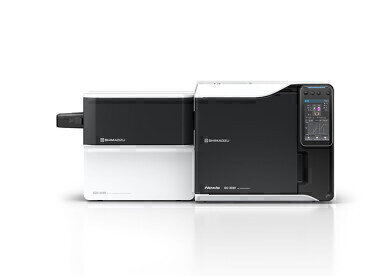Analytical Instrumentation
New chemiluminescence detection system hailed as world’s most innovative solution for sulphur detection
Apr 25 2019
Shimadzu has released the Nexis SCD-2030 sulphur chemiluminescence detection system. It consists of a Nexis GC-2030 high-performance GC and the newly developed SCD-2030 sulfur chemiluminescence detector. With this product, Shimadzu serves a growing demand for easy operation and maintenance as well as high stability even during long term operation for high selective and sensitive sulfur detection systems.
The sulphur in fossil fuels not only causes air pollution, but also interferes with catalysts during chemical reactions. Petrochemical companies are making efforts to reduce the sulphur content of fuels and have developed low sulfur gasolines containing only several tens of ppb or less. To accurately measure trace amounts of sulphur in fuel, a high sensitivity SCD detector is essential. Against this background, global sales of SCD detectors are expected to increase steadily in the future, and demand is growing for instruments that excel in highly sensitive detection.
The Nexis GC-2030, a next generation gas chromatograph, offers world-highest level of performance. It is based on the concept of superior usability and expandability for a wide variety of analytical applications, e.g. research and development and quality control in areas such as food, beverages, fragrances, gases and fuel cells. For these purposes, the Nexis GC-2030 can be equipped with any of a family of high-sensitivity detectors such as the newly developed sulfur chemiluminescence detector to create the Nexis SCD-2030 specialized system. It will deliver a new solution for low concentration sulfur component analysis to a variety of users.
Nexis SCD-2030 offers an unprecedented level of sensitivity. The strength of the sulphur chemiluminescence detection technique lies in high sensitivity combined with highest selectivity to sulphur. Quantification of lowest sulphur traces is performed without the need for full separation from other constituents in fuels.
By adopting a horizontal positioning system for the redox cell, the reaction time for the important conversion of sulphur compounds to sulphur oxide is extended while the total flow path from cell to detector is reduced to one-third compared with previous SCD detectors. Unstable components can be introduced into the reactor chamber at high speed, minimising sensitivity loss and enabling analysis to be performed with the highest level of sensitivity.
Together with chemiluminescence detection, the redox cell is the crucial part of an SCD detector, influencing selectivity and thus the final sensitivity. Depending on the sample, it requires frequent maintenance due to contamination of the pyro tube. In models with built-in vertical redox cells, replacing consumable parts (the inner pyro tubes) is problematic because it is difficult to reach them at the top of the instrument. With the Nexis SCD-2030 horizontally positioned sulfur chemiluminescence detection system, replacement of the inner pyro tube takes only 5 minutes. An SCD detector is usually more difficult to control than a general GC detector, but the Nexis SCD-2030 adjusts gas and temperature automatically, so measurement preparations are completed with just a single touch. Combined with the LabSolutions analysis data processing system, the entire workflow from system check to starting/ending of analysis and stopping the instrument can be automated, supporting a more efficient work flow and minimizing the influence of human error.
Shimadzu has introduced the first horizontal positioning system in the industry for the redox cell, a core component of sulfur chemiluminescence detectors. This design enables a stable redox reaction by ensuring sufficient reaction zone and reaction time. Compared with other SCD detectors, fluctuation of sensitivity is less (24-hour sensitivity fluctuation is about 1.6 times better) and the effect of differences in analytical conditions such as column flowrate is minimized.
Digital Edition
PIN 25.1 Feb/March
March 2024
In This Edition Safety - The technology behind the ION Science Tiger XT - Safety with ammonia and LOHCs as hydrogen carriers Analytical Instrumentation - Discussion on new tribology te...
View all digital editions
Events
Apr 24 2024 Mumbai, India
Apr 24 2024 Jakarta, Indonesia
Apr 28 2024 Montreal, Quebec, Canada
Apr 30 2024 Birmingham, UK
May 03 2024 Seoul, South Korea


















